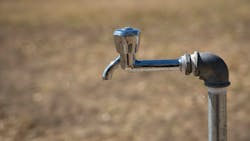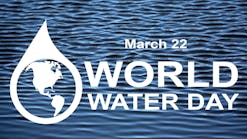Based on recent breakthroughs in instruments and data modelling, a team of researchers from Denmark’s Aarhus University developed a technology to measure groundwater from the surface using nuclear magnetic resonance (NMR)
The team claims that, thanks to its use of NMR, the new technology sends much cleaner signals and enables users to make detailed maps of the hydrogeological and geological structure of even inaccessible areas.
The research has just been published in Geophysical Research Letters.
"Using this new technology, NMR measurements are now a cheap, fast and, above all, very accurate tool for mapping and characterizing groundwater systems,” said Assistant Professor Denys Grombacher from the Department of Geoscience. “There are problems with groundwater all over the world, and the really good news is that, using this tool, we can better map the groundwater and thereby take better care of it.”
Groundwater is a critical source of freshwater for many billions of people, but climate change, pollution, and excessive use are making it more difficult to find suitable areas as a groundwater source.
NMR influences the hydrogen atoms in water molecules in the subsurface using a man-made magnetic field on the surface. Hydrogen atoms have a nuclear spin which, in principle, aligns with the magnetic field of the earth, either with or against the field – just like small magnets.
A pulse from the artificially created magnetic field changes the spin direction of the hydrogen atoms, and when the pulse fades out, the atoms return to the direction they had before. This realignment emits an electromagnetic field that can be measured.
NMR measurements have a disadvantage, however, in that background noise can make it difficult to measure the very weak realignment signal. New developments in data transmission and modelling may be able to solve this issue.
"We can sort of direct the microphone towards the specific sound source we want to hear, and through a number of identical pulses almost 'force' a clear signal from the hydrogen atoms in the soil,” said Associate Professor Jakob Juul Larsen from the Department of Electrical and Computer Engineering. “The computer can piece together the signal we receive to an accurate reproduction of the original signal using data modelling."
The research team sees the new technology as a breakthrough in groundwater modelling, and as a quick, stable, reliable and inexpensive alternative for mapping groundwater throughout the world.



